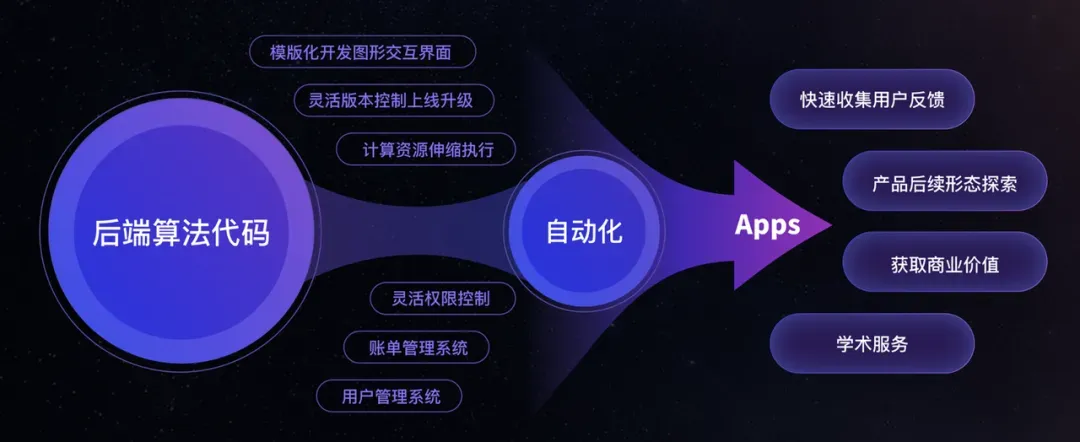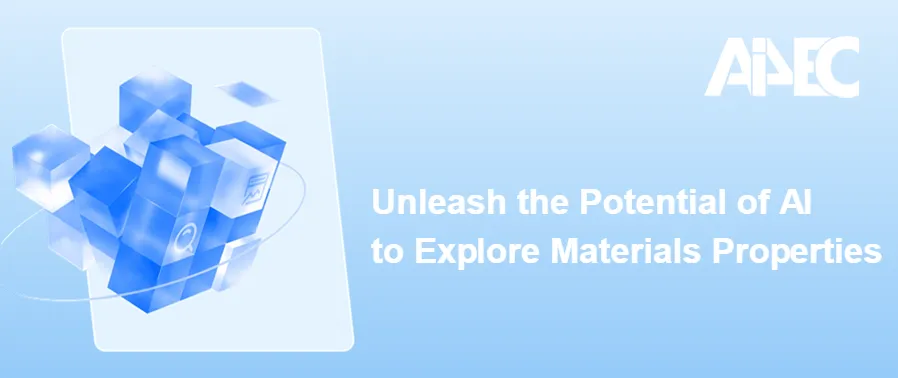 AI4EC Lab launched its first automated potential function training and free energy calculation software package for dynamic catalysis research in April 2024 - ai²-cat (https://github.com/AI4EC/ai2-kit). This package comprehensively considers the coupling between the dynamic effects of catalyst structures and reaction processes under real catalytic reaction conditions. By combining active learning strategies with enhanced sampling algorithms, it trains high-precision machine learning potential functions for long-time-scale molecular dynamics simulations of specific catalytic systems and calculates reaction free energies in conjunction with enhanced sampling algorithms. ai²-cat can facilitate efficient catalytic reaction simulations and property calculations, promoting the transition of catalytic research from static to dynamic, and helping to build a new computational catalysis model based on high-throughput automated calculations and AI models. To facilitate users' quick start and evaluation, AI4EC Lab has launched a series of Dynacat Apps in the Bohrium® Apps community. With the efficient workflow of ai²-cat and the powerful capabilities of Bohrium and DFlow, users only need to input the corresponding parameters for single-point energy calculations, potential function training, and enhanced sampling simulations to achieve the workflow for data labeling, potential function training, and reaction free energy calculation.
AI4EC Lab launched its first automated potential function training and free energy calculation software package for dynamic catalysis research in April 2024 - ai²-cat (https://github.com/AI4EC/ai2-kit). This package comprehensively considers the coupling between the dynamic effects of catalyst structures and reaction processes under real catalytic reaction conditions. By combining active learning strategies with enhanced sampling algorithms, it trains high-precision machine learning potential functions for long-time-scale molecular dynamics simulations of specific catalytic systems and calculates reaction free energies in conjunction with enhanced sampling algorithms. ai²-cat can facilitate efficient catalytic reaction simulations and property calculations, promoting the transition of catalytic research from static to dynamic, and helping to build a new computational catalysis model based on high-throughput automated calculations and AI models. To facilitate users' quick start and evaluation, AI4EC Lab has launched a series of Dynacat Apps in the Bohrium® Apps community. With the efficient workflow of ai²-cat and the powerful capabilities of Bohrium and DFlow, users only need to input the corresponding parameters for single-point energy calculations, potential function training, and enhanced sampling simulations to achieve the workflow for data labeling, potential function training, and reaction free energy calculation.
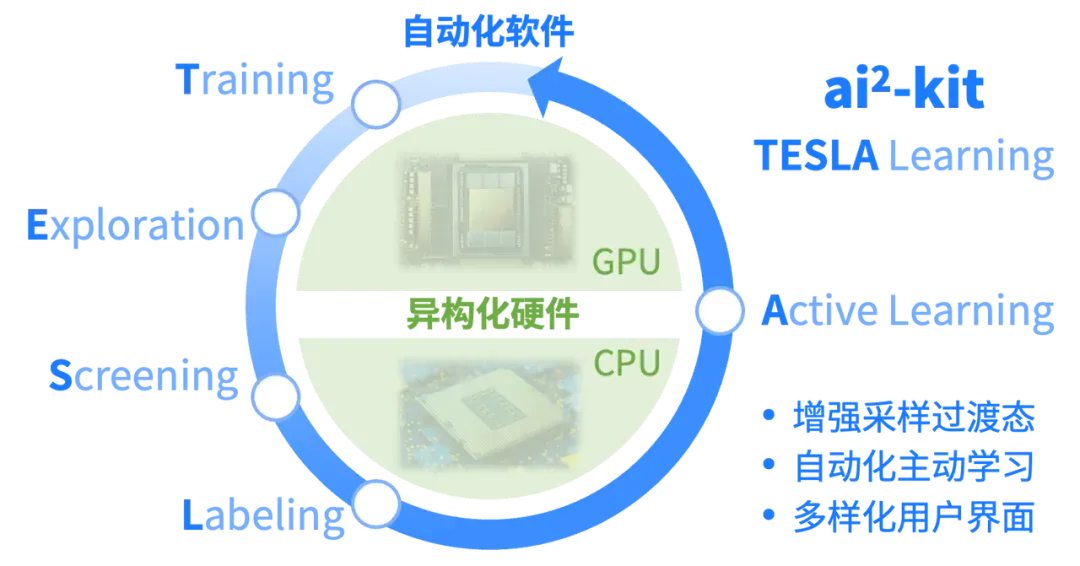
DynaCat@Apps
Since ai²-cat depends on various software and needs to run on supercomputing clusters, properly configuring the required software and hardware environment is a complex task and a significant challenge for general users. To enable more users to quickly experience and evaluate the relevant algorithms, AI4EC Lab has collaborated with DeepModeling Technologies to release the core functions of ai²-cat in the form of Bohrium Apps. With the computing power support and interactive interface provided by the Bohrium platform, users only need to provide a small amount of configuration and input information according to the guidance to complete the calculations. These applications include:
- CP2K Lightning: Automatically generates and runs CP2K first-principles molecular dynamics simulation jobs based on initial structures and configuration options, serving as the initial dataset for subsequent potential function training. Link: https://bohrium.dp.tech/apps/cp2k-lightning
- DynaCat TESLA: Automatically trains potential functions suitable for dynamic catalysis research using preset training strategies, supporting enhanced sampling functions based on Plumed. Upon successful job execution, the system will automatically output a report and provide dataset and potential function downloads. Link: https://bohrium.dp.tech/apps/dynacat-tesla
- DynaCat MD: Uses trained potential functions for catalytic process simulation and free energy calculation. After completion, users can view and download generated data and free energy curves on the interface. Link: https://bohrium.dp.tech/apps/dynacat-md
The above applications have been launched and opened on the Bohrium platform. Everyone is welcome to try them and provide valuable feedback in the Apps webpage discussion area. Below, we will demonstrate how to use CP2K Lightning, DynaCat TESLA, and DynaCat MD to achieve complete dynamic catalysis calculation and analysis in the form of a Notebook.
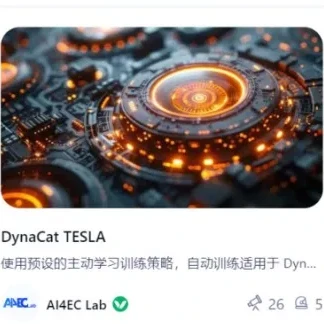
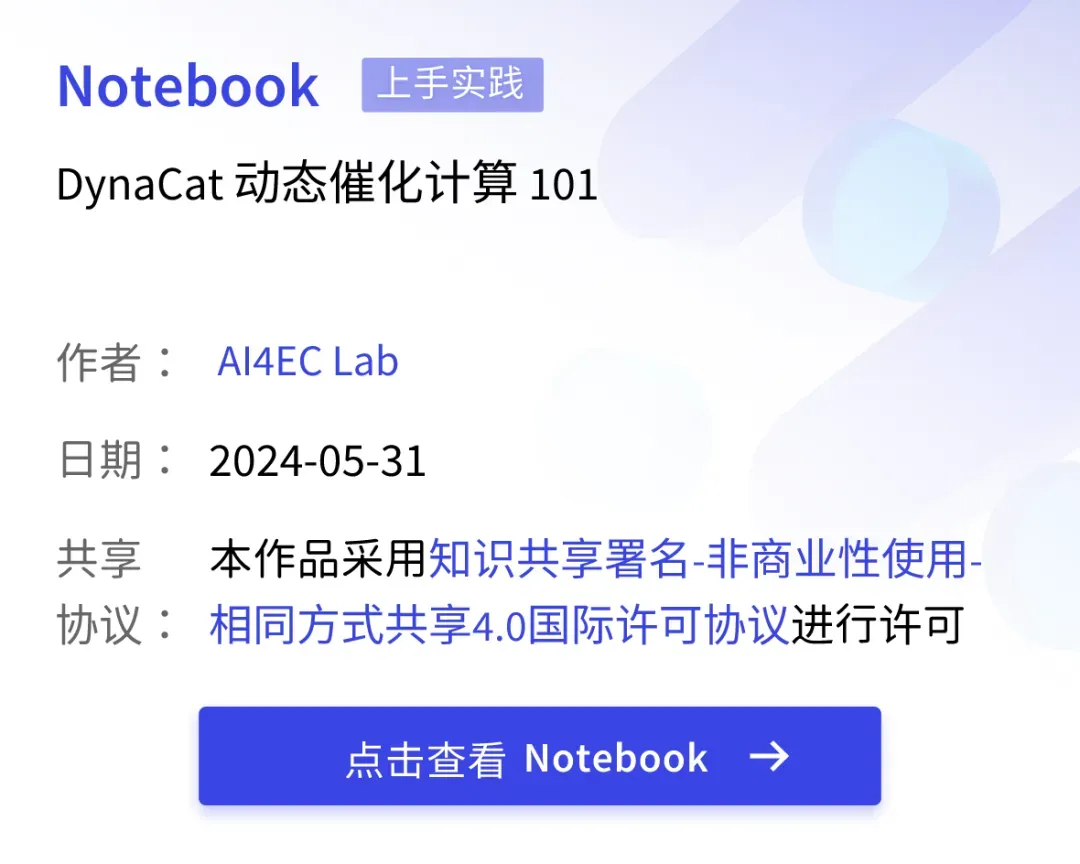
Bohrium
Link: https://bohrium.dp.tech/notebooks/15627733825
Bohrium® Apps is an innovative development tool designed to help developers quickly turn algorithmic code into functional applications, significantly improving the efficiency of validating new ideas. By simply modifying the entry code of an algorithm, developers can generate rich user interfaces and complete feature suites. With Bohrium® Apps, developers can rapidly collect user feedback, support further optimization of their methods, realize practical applications of research outcomes, and create commercial value.
